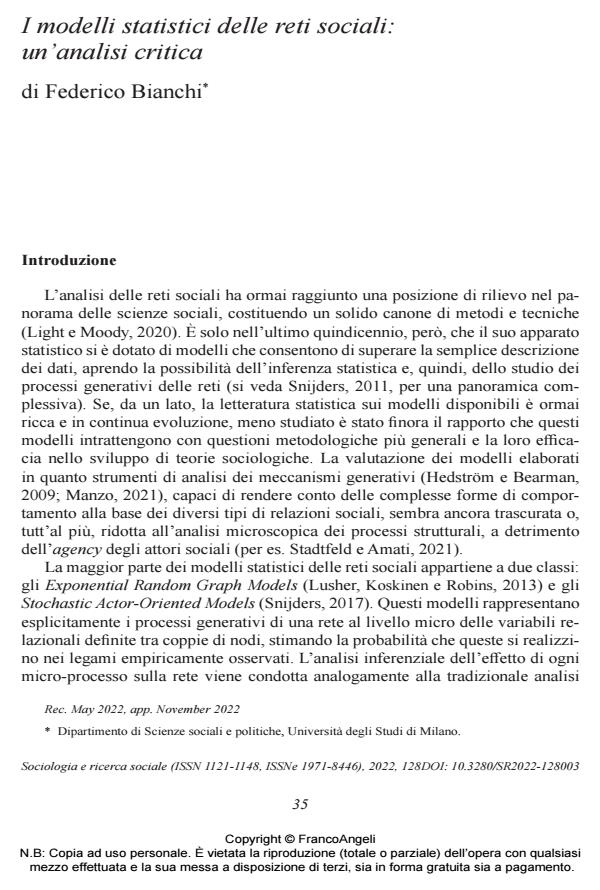I modelli statistici delle reti sociali: un’analisi critica
Titolo Rivista SOCIOLOGIA E RICERCA SOCIALE
Autori/Curatori Federico Bianchi
Anno di pubblicazione 2022 Fascicolo 2022/128
Lingua Italiano Numero pagine 24 P. 35-58 Dimensione file 460 KB
DOI 10.3280/SR2022-128003
Il DOI è il codice a barre della proprietà intellettuale: per saperne di più
clicca qui
Qui sotto puoi vedere in anteprima la prima pagina di questo articolo.
Se questo articolo ti interessa, lo puoi acquistare (e scaricare in formato pdf) seguendo le facili indicazioni per acquistare il download credit. Acquista Download Credits per scaricare questo Articolo in formato PDF

FrancoAngeli è membro della Publishers International Linking Association, Inc (PILA)associazione indipendente e non profit per facilitare (attraverso i servizi tecnologici implementati da CrossRef.org) l’accesso degli studiosi ai contenuti digitali nelle pubblicazioni professionali e scientifiche
In recent years, analysis of social networks has been equipped with a robust corpus of statistical models, allowing statistical inference and multivariate analy- sis, beyond the simple description of data. In this way, these models can be used to test hypothetical generative mechanisms of empirically observed social networks. In this article we present and compare the two fundamental classes of statistical models of social networks: the Exponential Random Graph Models and the Sto-chastic Actor-Oriented Models. At the same time, we propose a critical analysis of the explanatory power of these models in the light of the assumptions related to the type of rationality of the actors, the information available and the dynamics of the actions. Finally, a proposal of geometry of application of these models is men-tioned according to the type of social relations analyzed, the breadth of the network and the institutional and organizational context in which the network develops.
Federico Bianchi, I modelli statistici delle reti sociali: un’analisi critica in "SOCIOLOGIA E RICERCA SOCIALE " 128/2022, pp 35-58, DOI: 10.3280/SR2022-128003